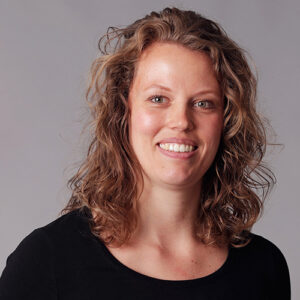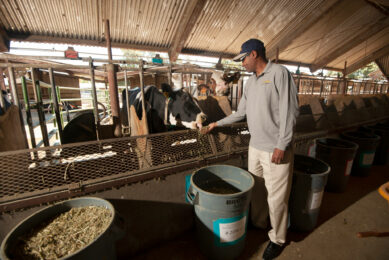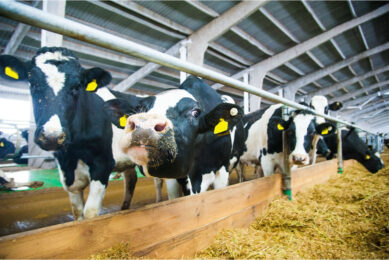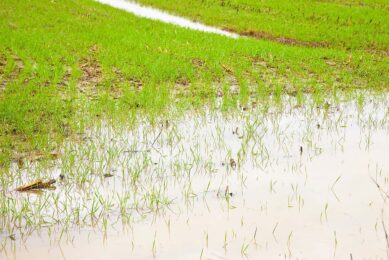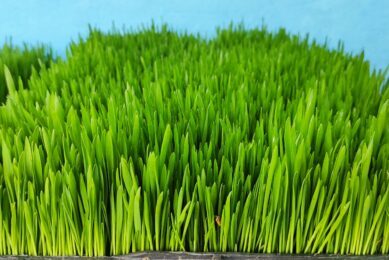Hay – the key to success in dairy cows
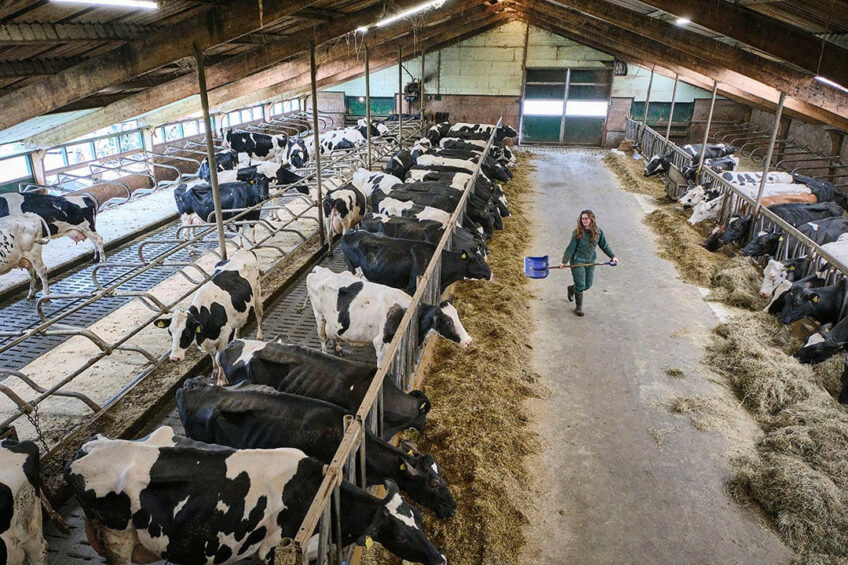
Dutch dairy farm VOF Rijnsburger makes hay for the dry cows according to a tight schedule. This ensures a better start to lactation. The dry period approach works easily and the number of disorders after calving can be counted on one hand.
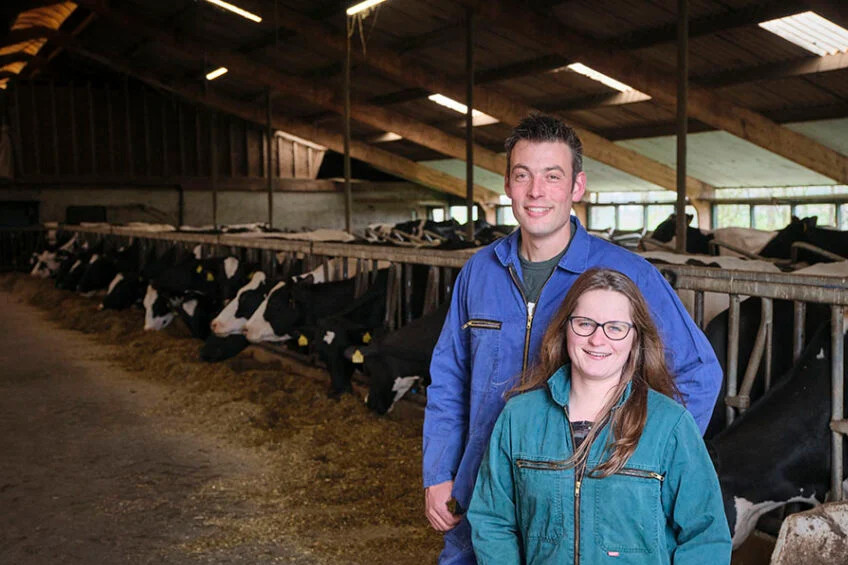
By mid-April there is already quite a lot of grass on the VOF Rijnsburger farm. Due to the wet spring, the cows go outside a few weeks later than normal. Dairy farmers are fervent supporters of grazing their cows. Management is therefore aimed at getting the cows to mainly eat grass.
The livestock farmer has 26 hectares of permanent grassland. This requires good planning: the cows need to graze, the silage bunkers must be filled during the season, and hay needs to be make for the dry cows.
In addition, Marijke and her boyfriend Max both work outside the home 5 days in the week. Marijke works as a cattle specialist at ABZ De Samenwerking and Max is a calf specialist at Alpuro Breeding. They therefore strive for simple business operations to effectively combine the farm and both jobs.
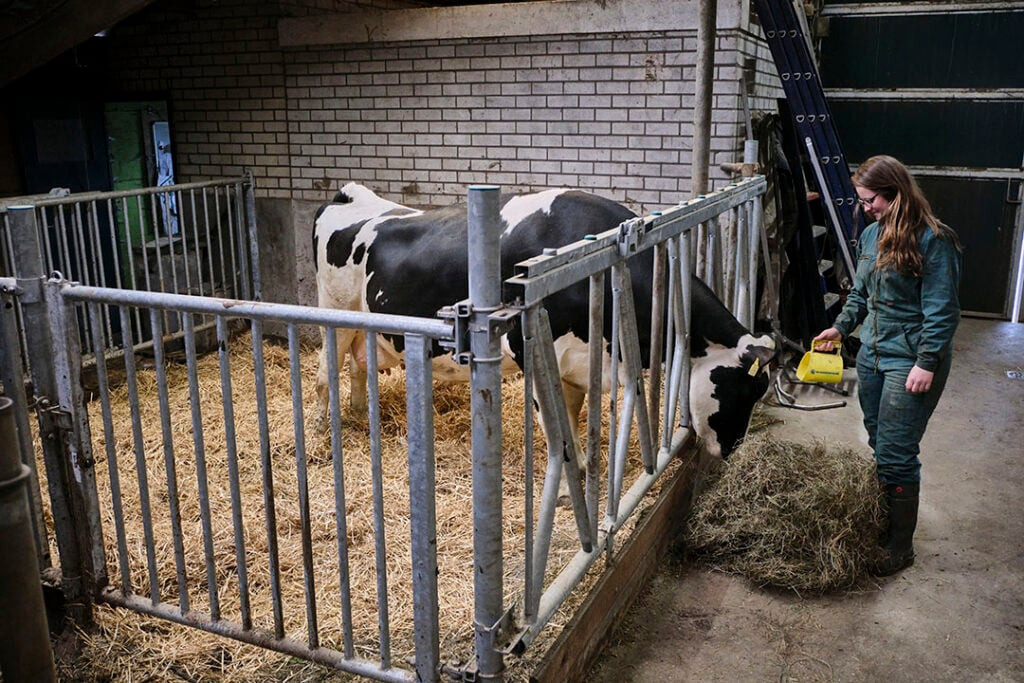
Less in bales, more in the pit
In 2021, the entrepreneurs installed 2 new slot silos. “We had quite a lot of grass baled every year, because the grass didn’t all fit into one single hole,” says Max. “We wanted to get rid of those bales. The pits started to heat up and pressing and wrapping them in plastic cost €16 per bale. You have a lot of waste and the yard was full of it.” Now each cut of grass is divided between both silos. “We can now finish feeding just as quickly, because unpacking bales also took a lot of time.”
The best thing is actually to make hay from a clean, ungrazed and unfertilised first cut.”
Making hay for dry cows
Around the same period, Marijke and Max started looking at a way to feed the dry cows differently. The group of dry cows was a point of concern. Ketosis and milk fever cropped up every now and then. “All cuts in the silage contain more than 900 Feed Unit Milk, so it is too rich for the dry cows,” says Marijke. Through a colleague from ABZ De Samenwerking she came up with the idea of making hay for the dry cows. “It is too small a group of cows to mix a ration every day. We wanted to try this concept with hay.”
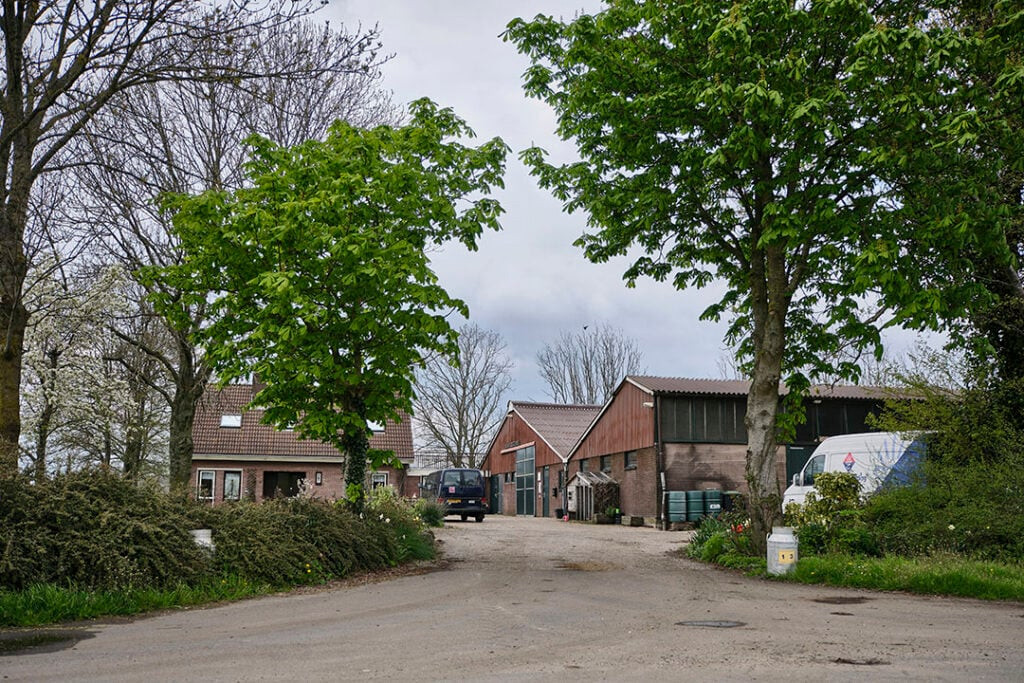
Planning needed for more hay
A lot of planning is required to make the best possible use of the grass. “We divide the land into 3 blocks. One section for grazing the cows, one for mowing and one section left to grow,” says Marijke. “The best thing is actually to make hay from a clean, ungrazed and unfertilised first cut.”
Last year the entrepreneurs had 50 bales of hay made. That was enough for more than 6 months. So what is now in the barn is purchased hay. “We buy meadow hay and not grass seed hay,” says Max. “Grass seed hay has often been fertilised and that gives a higher potassium content in hay. That is disadvantageous for dry cows.”
Dry cows should be treated like queens. That is why we make good rations ourselves, especially for this group.
Marijke and Max would rather make more hay this year. “You have to treat the dry cows like queens. That is why we think it is important to make good rations ourselves, especially for this group. This year we might want to have the hay chopped. We also do the same with all the grass that goes into the pit. The dry matter intake of the dry cows is now above 11 kgs of dry matter. If we chop, you will have smaller pieces and probably even more feed intake,” say the entrepreneurs. For example, it increases the surface area of the rumen papillae and the cows can also eat more roughage during lactation.
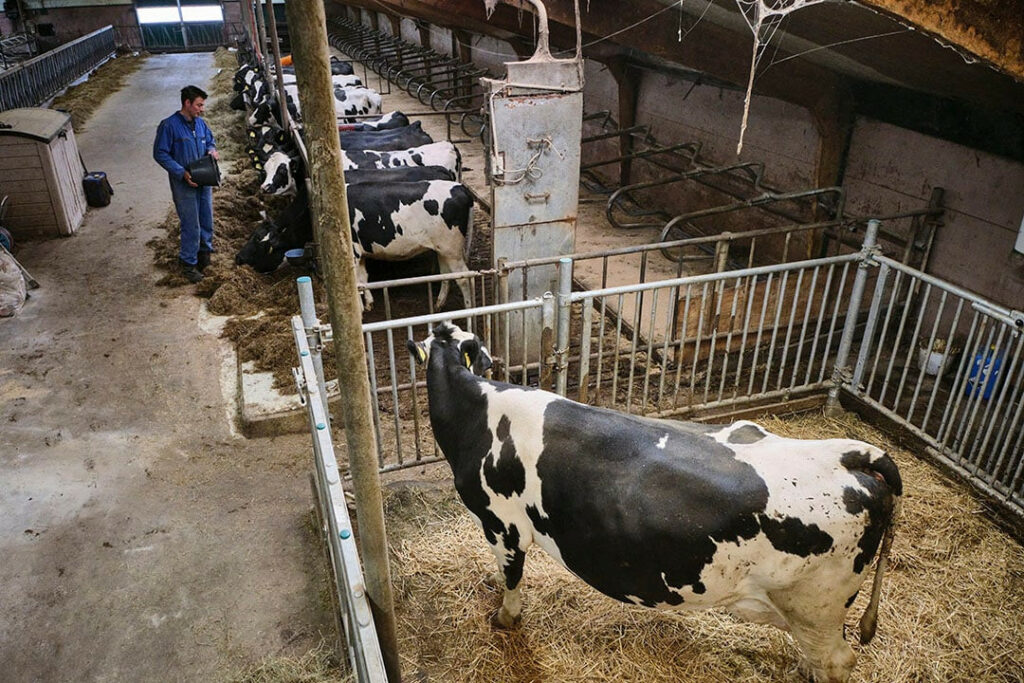
Leave no room for error
The dry period approach with hay and pellets works easily for everyone. “You put a bale ready and every morning and evening we give each cow a kilogramme of Catapult pellets. If another family member feeds the dry cows once, then nothing can actually go wrong. The cows really like the kibble because it contains no anionic salts.”
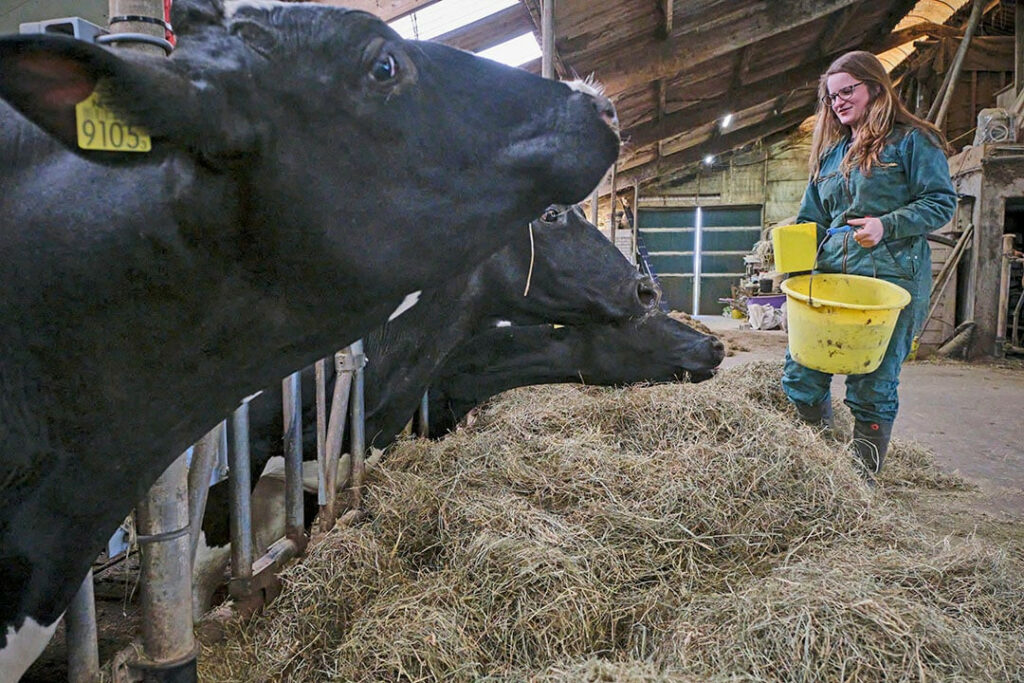
Keeping dry cows together
The cows run in the same group during the entire dry period and receive the same pellet. The pellets serve as a supplement to rumen energy and minerals. The grassland is only fertilised with artificial fertiliser. That is why the hay contains little phosphorus. This ensures that calcium metabolism remains active. This is important, because when cows calve they immediately have calcium available and they do not get milk fever.
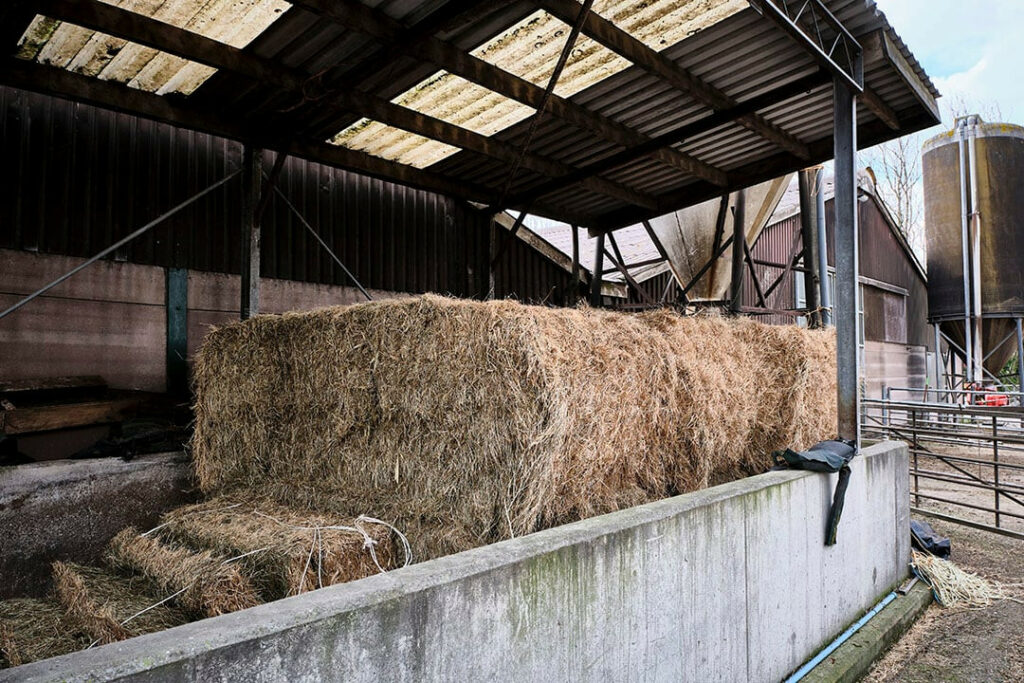
Important to keep rumen full
The hay contains only 716 Feed Unit Milk. That is not much for the dry cows, but because of the sugar content of 130, they eat a lot of it. The active calcium metabolism and the high feed intake ensure that the cows start better. “In the end, that is the most important thing, that the rumen is full. During the dry period and just before calving, the rumen is full. It’s not like she’s going into a recording slump.”
Minimum disorders
“You can now count the number of disorders per season on one hand.” Rumination after calving is an indication that the start of lactation will go well. “After calving, every fresh cow stays in the calving pen overnight to keep an eye on her. After calving, cows quickly start eating the dairy cattle ration, the so-called bunker effect. If she chews her cud, she can put a curl behind her name,” says Max.


